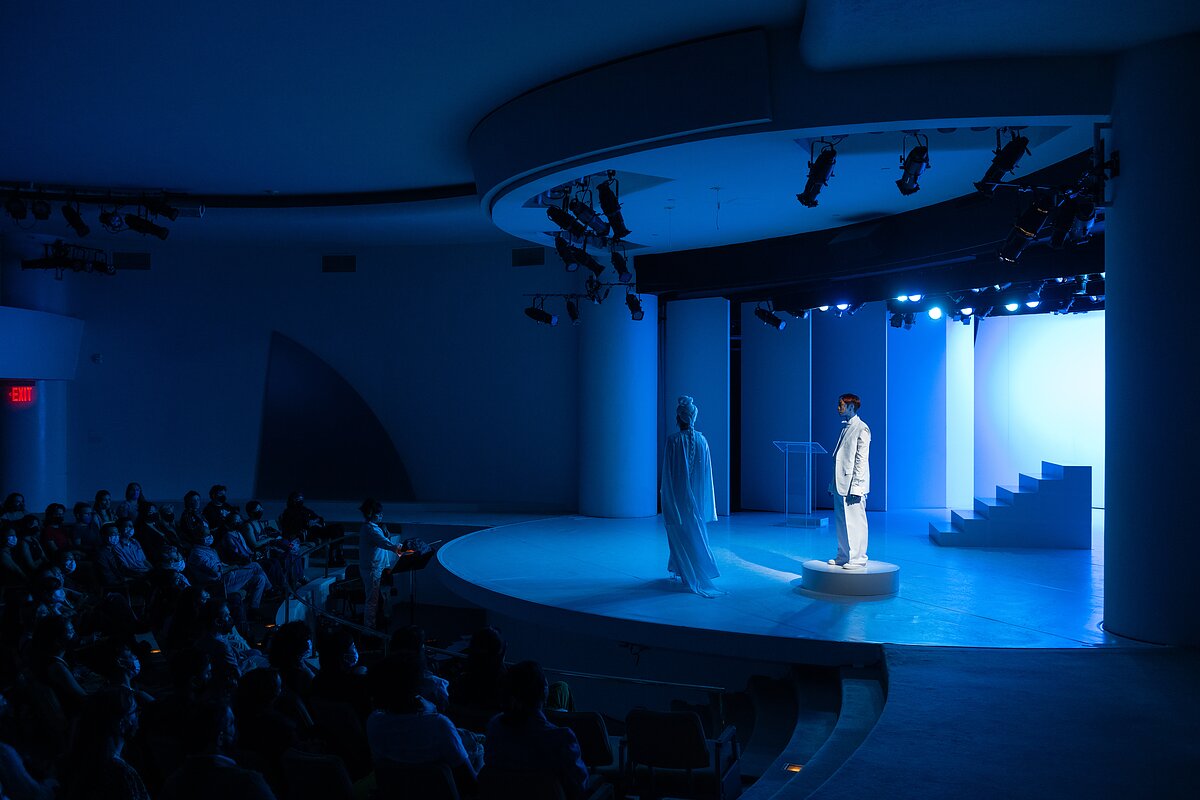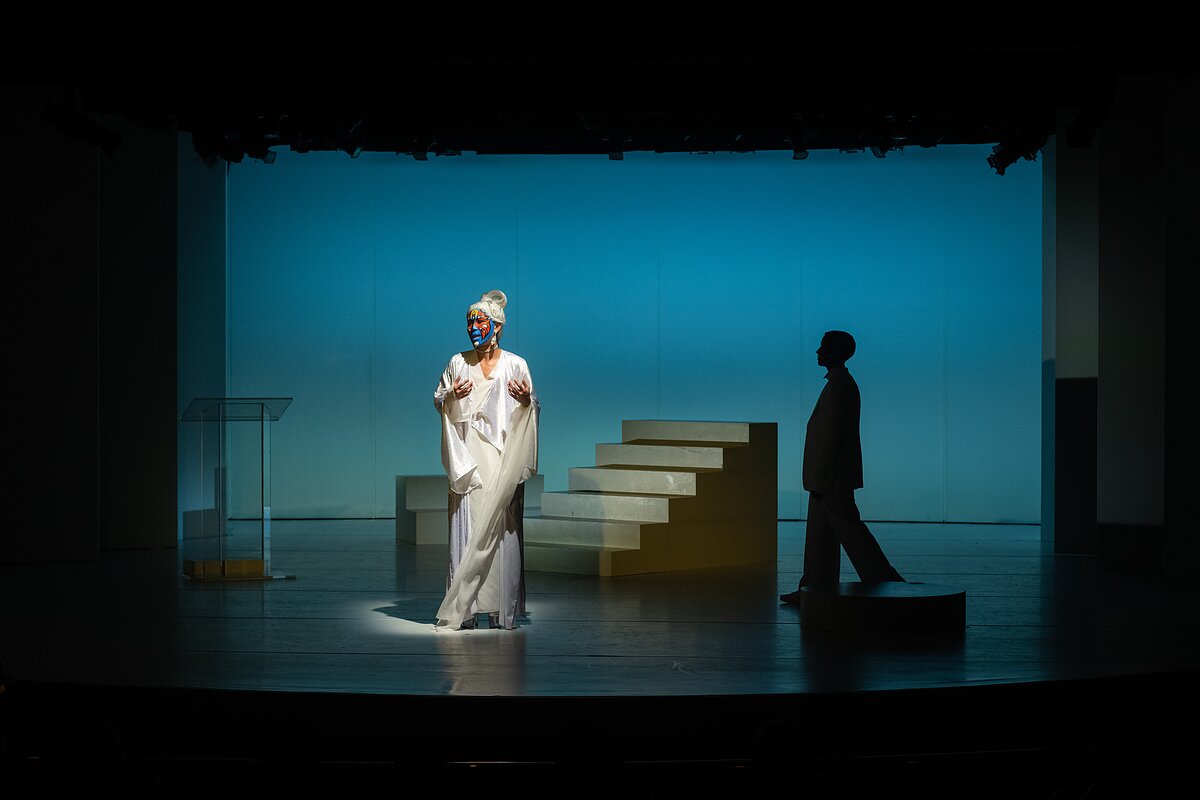Sin Wai Kin’s Surreal Performance Blurs Definitions
Sin Wai Kin’s performance, the story changes the body changes (repeating) (2022), shatters formats of traditional narration in a flurried tale accompanied by an electrifying string orchestra. Commissioned by and performed at the Guggenheim’s Peter B. Lewis Theatre in May of 2022, the show features a figure clothed in a crisp white tuxedo who stands with rigid authority before a transparent, acrylic podium.
Fiery painted roots bloom from their nose to their face’s edge, encompassed by a rich cobalt. Their hair, parted to the side, is a vibrant tangerine, and sitting just above their third eye is a pearlescent orb. This is The Storyteller, Sin’s personification of the universe who doubles as a newscaster.
Within the same plane, at the center of the stage, another figure sits atop a set of stairs. Their ankle hangs delicately over the edge, and the tail of their opalescent, crystal-embellished robe ripples over and down each step. Behind them, a projection of the moon passes through its phases.
In a drawn-out, measured cadence, The Storyteller commences the 42-minute performance by relaying the top stories of the day. Allegories, dreams, observations, and fables are reported in calm succession, all assigned equal importance in the hierarchy of breaking news. The news presented by The Storyteller is a fusion of fact and fiction, each an account of an imagined or lived story.
Shrieking strings fill and dissipate within the room. The figure sitting atop the stairs turns to reveal a face which echoes the patterns on a Buckeye butterfly—wings flared, each marked with eye-like markings. This character is Change.
Change articulates a soliloquy of their own self-becoming through vocalizations. Occasionally interrupted by a pulsing repetition of gestures and words, Change probes the facile deployment of language as a futile way to divide and police bodies and experiences. These are further distilled into the dualisms we know so well: self and other; male and female; universal and personal; fact and fiction. “Meanings transform as I try to hold them still with names,” utters Change in a silken voiceover. In foregrounding the foolish rigidity of a name, Change evades a static mode of being by rejecting the boundaries of either/or.
Following the steady movements of Cantonese opera performers, The Storyteller and Change drift into a saunter which circuits the theater’s audience. Between the stage and the balcony, their words swirl around each other in swift call-and-response: “I’m just telling a story.” “You’re telling a story.” “I’m not telling a story, I’m describing a reality.”
As their exchange unfurls, the division between reality and fantasy falters as statements once posited as truth are quickly refuted in the next, and dreams are confused as an official account of the self. With each tale that The Storyteller recounts, Change is subjected to a perpetual reconstruction of their being: “At this moment I’m trying things on and taking things off and that’s all you.”
The stories we tell matter, especially if they are inscribed in history as ever-present and already-established—fixed in their meaning and unwavering in the way they construct social law. Gender and race are just some of the fictions created to support an oppressive status quo which has emerged from the wicked binary of the self and the other and has resulted in an often-violent reality for those who refuse to be shaped by the dualisms which govern the present.
What Sin’s fantastical performance offers is to imagine otherwise. Through a whirlwind narrative which sees reality and fiction collapse, the characters within Sin’s speculative realm are free to inhabit their beings unconfined by the specificity of categories. To follow suit is to allow the self to be a site of reinvention—looped in an infinite cycle of change.
Sasha Cordingley is an arts and culture writer from the Philippines, born in Hong Kong, and currently residing in Brooklyn, NY. They received their BFA from the Rhode Island School of Design and their MFA from Goldsmiths, University of London.



